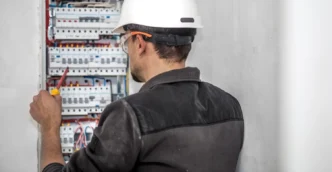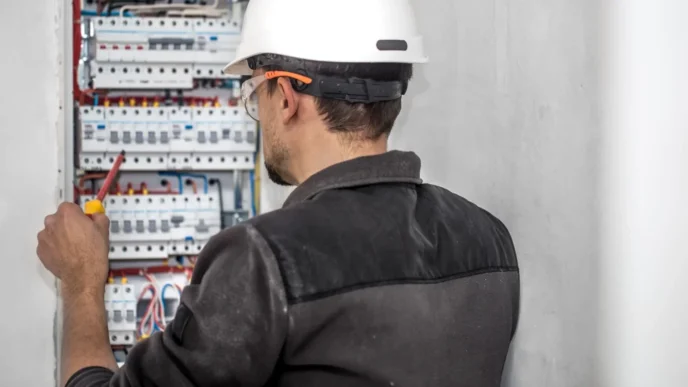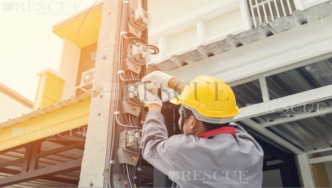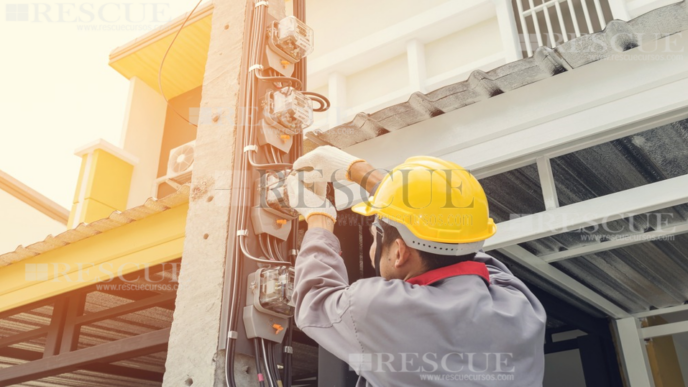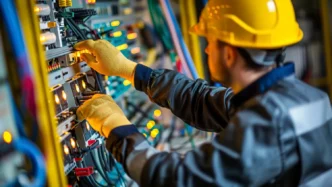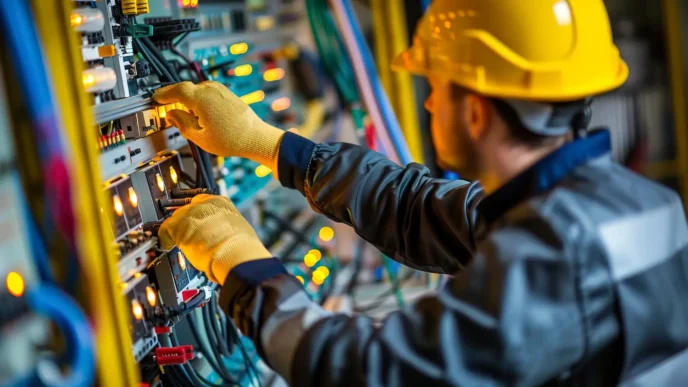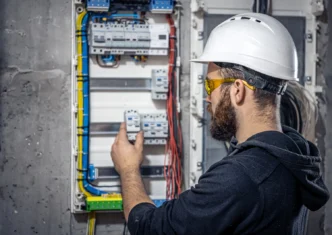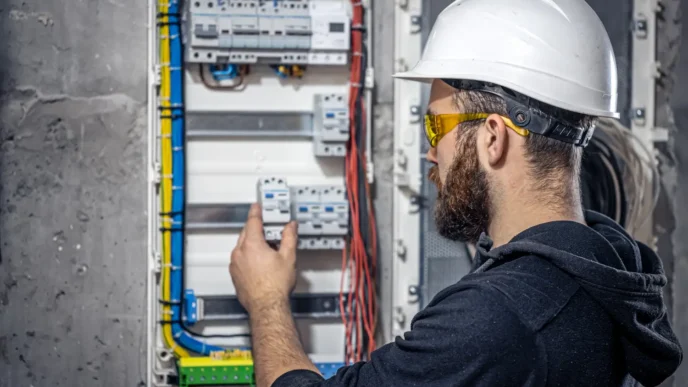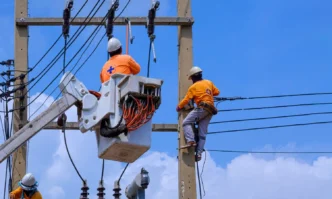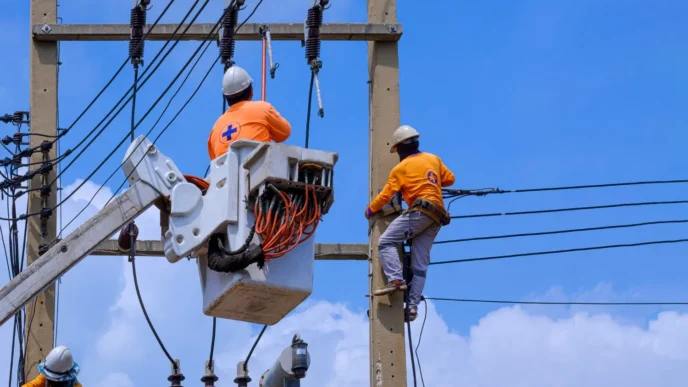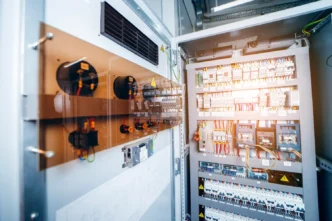Technical Name: TRAINING COURSE NR 10 – SEP (SAFETY IN ELECTRICAL POWER SYSTEMS (SEP) AND NEARBY AREAS) – TAUGHT IN ENGLISH
Reference: 10714
We provide courses and training; We perform Translations and Versions in Technical Language: Portuguese, English, Spanish, French, Italian, Mandarin, German, Russian, Swedish, Dutch, Hindi, Japanese and consult to others.
NR 10 SEP Course in English
The NR 10 SEP Course in English trains professionals to work safely in electrical power systems and their surroundings, in accordance with NR 10. We deliver the training in technical English, ensuring practical mastery, precise communication, and compliance with international standards. In addition, the course covers live-line working techniques, risk analysis, proper use of PPE and collective protection equipment (CPE), installation release procedures, and prevention of complex electrical accidents.
The training is mandatory for those working with medium and high voltage, as specified in item 10.8 of the standard. Unlike the NR 10 SEP Course in English, which focuses on low voltage, the SEP course targets critical environments such as substations, transmission lines, and operation centers. The program includes issuance of ART (Technical Responsibility Annotation), ensuring full legal validity and technical credibility.
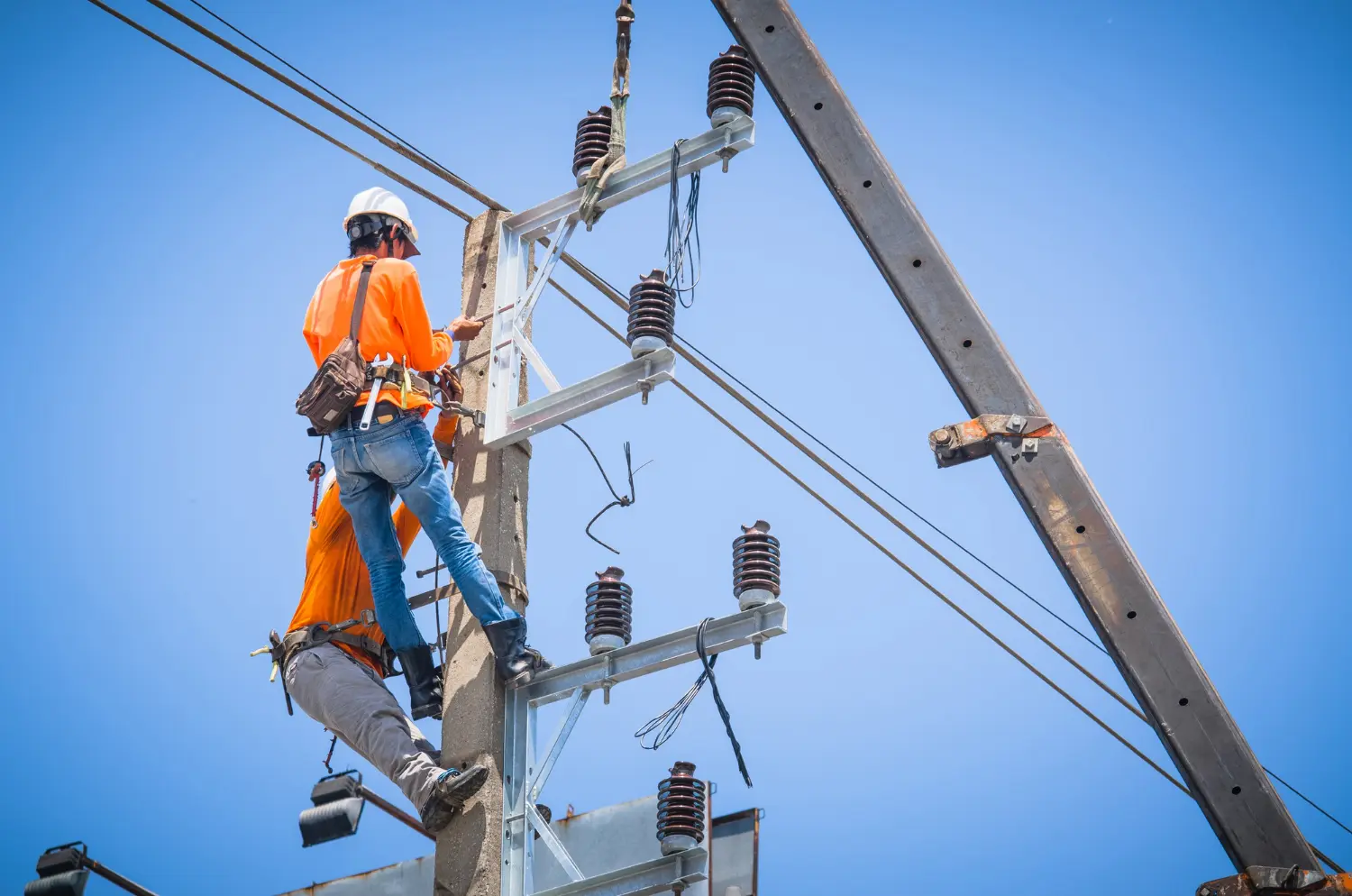
When is the SEP training required according to NR 10?
According to NR 10, item 10.8.8, SEP training is mandatory for all workers who perform activities directly or indirectly in electrical installations of the Power System (SEP) and in its proximity, especially in the following scenarios:
Transmission and sub-transmission lines;
Medium and high-voltage substations;
Distribution networks;
Operation and maintenance centers with voltage above 1000V;
Environments involving live-line work, whether or not the power supply is interrupted.
Furthermore, workers must complete this training prior to starting their activities, and renew it every two years, or whenever there is a change in job role, return from leave, or modification in the electrical installations.
NR 10 SEP Course in English: Where are arc flash risks most critical in the SEP?
Arc flash risks are most critical in substations, medium and high-voltage panels, energized enclosures, and confined spaces. In these locations, the combination of stored energy, lack of insulation, and operational failures can trigger instantaneous thermal explosions, reaching temperatures above 19,000°C.
Within the SEP context, this risk increases due to the continuous energization of equipment, demanding specific techniques, high-performance PPE, and specialized training.
How is risk analysis applied within the SEP context?
In SEP environments, we apply risk analysis with technical accuracy and real-time context awareness. We identify hazards such as induction, energized components, and grounding failures, using tools like Preliminary Risk Analysis (PRA), risk matrices, and formal work permits.
We evaluate each variable based on technical data, exposure time, and actual site conditions.
What is the difference between the Basic NR 10 course and the SEP course?
The difference between the Basic NR 10 Course and the NR 10 – SEP Course lies in the technical complexity, level of risk involved, and required competencies.
Practical and Normative Comparison:
| Aspect | Basic NR 10 | NR 10 – SEP |
|---|---|---|
| Voltage range | Low voltage (LV) | Medium and high voltage (MV and HV) |
| Application | Residential, commercial, and basic industrial installations | Power systems, substations, transmission lines |
| Training duration | Minimum 40 hours | Additional 40 hours |
| Content | Electrical safety fundamentals, PPE/CPE, first aid | Live-line work techniques, induction risks, electromagnetic fields, energized lines, system release procedures |
| Mandatory | For any electrical activity | Mandatory for workers in SEP environments or nearby |
| Technical Responsibility (ART) | Not always required | Always required for critical operations with defined technical responsibility |
Conclusion: Basic NR 10 training is not sufficient to authorize a worker to operate in SEP environments. Failing to distinguish between these trainings transfers the technical and legal risk directly to the organization.
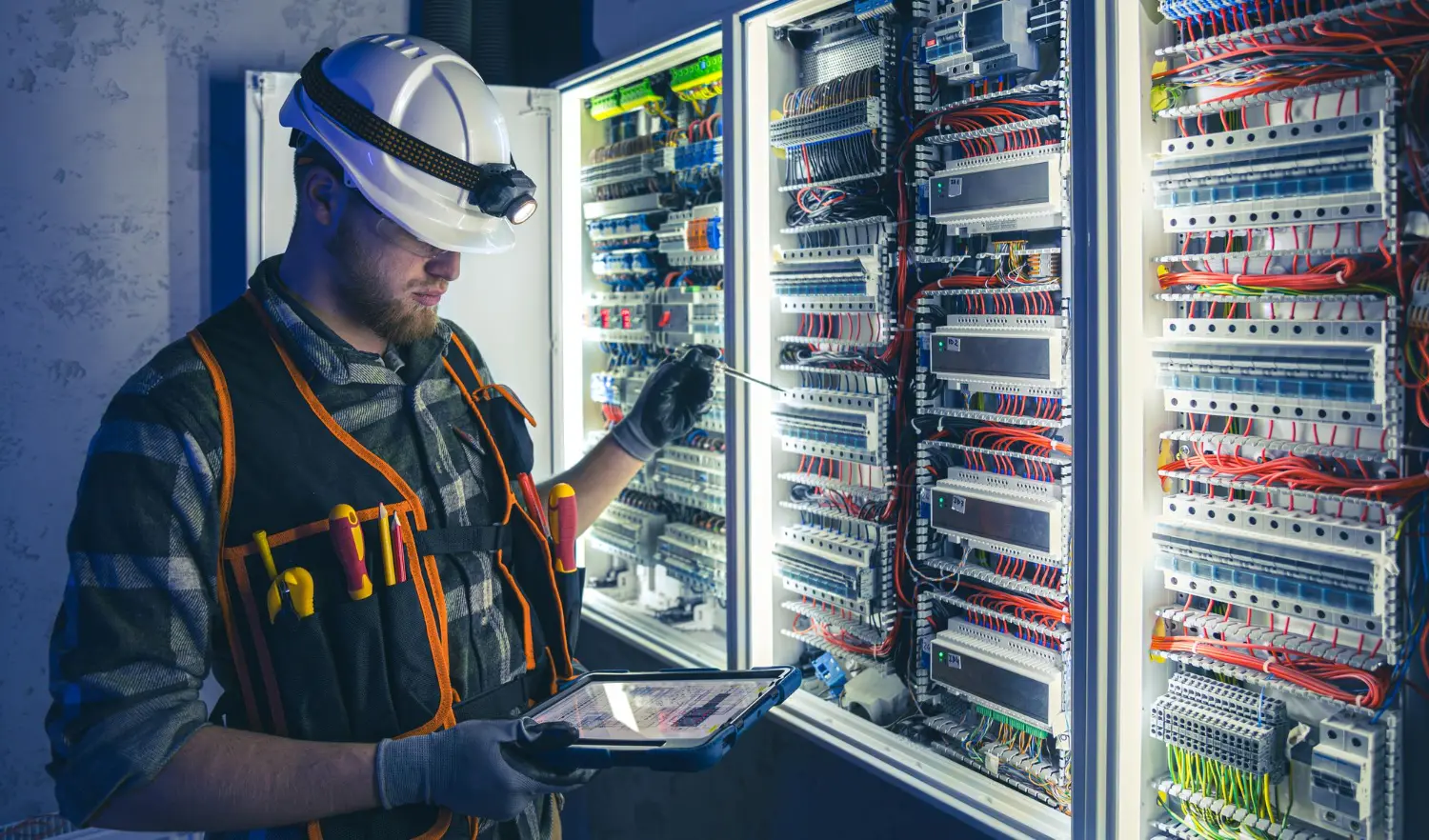
NR 10 SEP Course in English: What is the importance of communication and signaling in the SEP?
Clear communication and visible signaling are essential lines of defense against fatal accidents in the SEP. In high-complexity operations, any miscommunication between teams can lead to unexpected energization, failure in system release, or simultaneous action on an energized circuit. The standard requires the use of tags, lockout devices, signs, radios, and formal verbal protocols to prevent human error.
In the SEP, communication failures are costly. A single misinterpreted command can interrupt a life, or an entire system.
Why is training in English a strategic advantage?
Because delivering training in technical English eliminates the risk of misinterpretation in critical environments, where each term holds operational and legal significance. In international projects, external audits, or bilingual partnerships, professionals trained in this language operate with confidence, read manuals, interpret schematics, and respond with precision.
Furthermore, offering the course in English with ART (Technical Responsibility Annotation) shows that the company values real competence, not just a translated certificate. It reflects positioning, compliance, and technical authority in a single move.
Click the Link: Criteria for Certificate Issuance According to Standards
Certificado de conclusão
NR 10 SEP Course in English
NR 10 SEP Course in English
NR 10 SEP Course in English
Participants without experience:
Minimum working load = 80 hours/class
Participants with experience:
Minimum working load = 40 hours/class
Update (Recycle):
Minimum working load = 20 hours/class
Update (Recycling): The employer must carry out periodic training Annually and whenever any of the following situations occur:
a) change in procedures, conditions or work procedure;
b) event that indicates the need for new training;
c) return to work for more than ninety days;
d) change of company;
e) Exchange of machinery or equipment.
NR 10 SEP Course in English
NR 10 SEP Course in English
Normative references when applicable to applicable devices and their updates:
NR 01 – Disposições Gerais e Gerenciamento de Riscos Ocupacionais – (General Provisions and Occupational Risk Management);
NR 06 – Equipamento de Proteção Individual – EPI – (Personal Protective Equipment – PPE);
NR 10 – Segurança em Instalações e Serviços em Eletricidade – (Electricity Facilities Safety and Services);
ABNT NBR 5410 – Instalações Elétricas de Baixa Tensão – (Low Voltage Electrical Installations);
ABNT NBR 10439 – Instalações elétricas de média tensão de 1,0 kV a 36,2 kV – (Medium voltage electrical installations from 1.0 kV to 36.2 kV)
ISO 10015 – Gestão da qualidade – Diretrizes para treinamento – (Quality Management – Training Guidelines);
ISO 45001 – Sistemas de gestão de saúde e segurança ocupacional – Requisitos com orientação para uso – (Occupational health and safety management systems – Requirements with guidance for use);
Note: This Service exclusively meets the requirements of the Special Secretariat for Social Security and Labor (SEPRT); when dealing with services to other agencies, inform at the time of request.
NR 10 SEP Course in English
NR 10 SEP Course in English
What is NR 10 SEP?
It is the section of NR 10 aimed at professionals working in the Electrical Power System (SEP) that is, those who work directly on large-scale energized systems or within their influence zone.
Is it mandatory for workers operating within 3 meters of energized parts?
Even without direct contact, simply being near components energized above 1,000V requires SEP training, as established by NR 10.
Our pedagogical project follows the guidelines imposed by Regulatory Standard nº1.
After payment is made, Purchase Order, Contract signed between the parties, or other form of closing confirmation, the teaching material will be released within 72 working hours (up to 9 days), due to the adaptation of the syllabus and compliance with the Standards Techniques applicable to the scenario expressed by the Contracting Party; as well as other adaptations to the didactic material, carried out by our Multidisciplinary Team for technical language according to the student’s nationality and Technical Operational and Maintenance Instruction Manuals specific to the activities that will be carried out.
Attention: The Course teaches how to Apply the normative concepts of the standard, which enables you to sign Projects, Reports, Expertise etc. these are the attributions that the (a) Legally Qualified Professional has with their Class Council, such as CREA.
This course aims to study situations where it will be necessary to apply: Concepts and Calculations according to relevant Standards and does not replace the analysis and responsibility on the part of each professional accredited by CREA or other Class Councils in the most varied situations, where makes it imperative to respect the conservation conditions of the equipment, periodic checking of the instruments, such as respect for the primary capacity predetermined by the PPE manufacturers, among others based on the corresponding Standards.
OTHER ELEMENTS WHEN APPLICABLE AND CONTRACTED:
I – Minimum Schedule:
Organization of the Electric Power System – SEP.
Work Organization:
A) programming and planning services;
B) teamwork;
C) enchiridion and records of installations;
D) working methods; and
E) communication.
Behavioral aspects.
Precautionary conditions for services.
Typical risks in SEP and their prevention (*):
A) proximity and contacts with energized parts;
B) induction;
C) atmospheric discharges;
D) static;
E) electric and magnetic fields;
F) communication and identification;
G) work at height, machinery and special equipment.
Risk Analysis Techniques in SEP (*)
Working procedures – analysis and discussion. (*)
Working techniques under tension: (*)
A) in energized line;
B) the potential;
C) in internal areas;
D) work from distance;
E) night work;
F) underground environments.
Equipment, working tools (choice, use, conservation, verification, testing) (*).
Collective protection systems (*).
Equipments for individual protection (*).
Postures and work clothes (*).
Safety with vehicles, transportation of people, materials and equipment (*).
Signaling and isolation of work areas (*).
Release of installation for service and for operation and use (*).
Training in techniques of removal, assistance, transportation of accident victims (*).
Typical accidents (*)
– Analysis, discussion, protection measures.
Responsibilities (*).
Activity Complements:
Awareness of Importance:
APR (Preliminary Risk Analysis);
PAE (Emergency Action Plan;
PGR (Risk Management Plan);
Understanding the need for the Rescue Team;
The importance of knowledge of the task;
Prevention of accidents and notions of first aid;
Fire protection;
Perception of risks and factors that affect people’s perceptions;
Impact and behavioral factors on safety;
Fear factor;
How to discover the fastest and easiest way to develop Skills;
How to control the mind while working;
How to manage and manage working time;
Why balance energy during activity in order to obtain productivity;
Consequences of Risk Habituation;
Causes of accidents at work;
Understanding Tree of Causes;
Understanding Fault Tree;
Understandings on Ergonomics;
Workstation Analysis;
Ergonomic Risks;
Hazard Communication Standard (HCS) – OSHA;
Practical Exercises:
Evidence Record;
Theoretical and Practical Evaluation;
Certificate of participation.
NR 10 SEP Course in English
Know more: NR 10 SEP Course in English:
“NR 10 S.E.P. – Electrical Power Systems and their Surroundings:”
“10.7 – WORKS INVOLVING HIGH VOLTAGE (AT)
10.7.1 Workers involved in high voltage energized electrical installations, which carry out their activities within the limits established as controlled and risk areas, according to Annex II, shall comply with the provisions of item 10.8 of this NR. (Amended by Ministerial Order MTPS no. 509, of April 29, 2016).
10.7.2 The workers referred to in item 10.7.1 must receive safety training, specific in safety in the Electrical Power System (SEP) and in their vicinity, with a minimum curriculum, workload and other determinations established in Annex III of this NR . (Amended by Ministerial Order MTPS no. 509, of April 29, 2016).
10.7.3 The services in electrical installations energized in AT, as well as those executed in the Electric Power System – SEP, can not be carried out individually.
10.7.4 All work on electrical installations energized in AT, as well as those that interact with the SEP, can only be carried out by a specific order of service for date and place, signed by the superior in charge of the area.
10.7.5 Prior to initiating work on energized circuits in the TA, the immediate superior and the team responsible for the execution of the service must carry out a prior evaluation, study and plan the activities and actions to be carried out in order to comply with the basic technical principles and the best electrical safety techniques applicable to the service.
10.7.6 The services in electrical installations energized in AT can only be realized when there are specific procedures, detailed and signed by authorized professional.
10.7.7 The intervention in electrical installations energized in AT within the limits established as risk zone, according to Annex II of this NR, can only be realized by the deactivation, also known as blocking, of the sets and devices of automatic reclosure of the circuit, system or equipment. (Amended by Ministerial Order MTPS no. 509, of April 29, 2016).
10.7.7.1 Deactivated equipment and devices shall be signaled with identification of the stopping condition, according to standardized working procedure.
10.7.8 Equipment, tools and devices that are insulated or equipped with insulating materials intended for use in high voltage work shall be subjected to electrical tests or periodic laboratory tests, in accordance with the manufacturer’s specifications, the company’s procedures and in the absence year.
10.7.9 All workers in electrical installations energized in AT, as well as those involved in activities in the SEP must have equipment that allows the permanent communication with the other members of the team or with the operation center during the accomplishment of the service.
10.8 – EMPLOYMENT, QUALIFICATION, TRAINING AND AUTHORIZATION OF WORKERS
10.8.1 Qualified worker is one who demonstrates completion of a specific course in the electrical area recognized by the Official Teaching System.
10.8.2 The legally qualified professional is considered to be the worker previously qualified and registered in the competent class council.
10.8.3 A qualified worker is considered to be one who meets the following conditions, simultaneously:
a) receive training under the guidance and responsibility of a qualified and authorized professional; and
b) work under the responsibility of a qualified and authorized professional.
10.8.3.1 The training shall only be valid for the company that trained it and under the conditions established by the authorized and authorized professional responsible for the training.
10.8.4 Qualified or qualified workers and qualified professionals are considered authorized, with formal agreement of the company.
10.8.5 The company must establish an identification system that allows at any time to know the scope of the authorization of each worker, according to item 10.8.4.
10.8.6 Workers authorized to work in electrical installations shall have this condition recorded in the company’s employee registration system.
10.8.7 Workers authorized to intervene in electrical installations must undergo a health examination compatible with the activities to be carried out, carried out in accordance with NR 7 and recorded in their medical records.
10.8.8 Workers authorized to intervene in electrical installations must have specific training on the risks arising from the use of electric energy and the main measures to prevent accidents in electrical installations, in accordance with the provisions of Annex III of this NR. (Amended by Ministerial Order MTPS no. 509, of April 29, 2016)
10.8.8.1 The company will grant authorization in the form of this NR to the skilled or qualified workers and to the qualified professionals who have participated with satisfactory evaluation and use of the courses included in Annex III of this NR.
(Amended by Ministerial Order MTPS no. 509, of April 29, 2016)
10.8.8.2 Biennial recycling training shall be conducted and any of the following situations occur:
a) change of position or change of company;
b) return to work or inactivity for a period exceeding three months;
c) significant modifications in the electrical installations or exchange of methods, processes and work organization.
10.8.8.3 The workload and the programmatic content of the recycling training intended to comply with items “a”, “b” and “c” of item 10.8.8.2 shall meet the needs of the situation that motivated it.
10.8.8.4 Work in classified areas should be preceded by specific training according to the risk involved.
10.8.9 Workers with activities not related to electrical installations developed in a free zone and in the vicinity of the controlled zone, as defined in this NR, must be formally instructed with the knowledge to identify and evaluate their possible risks and adopt the appropriate precautions.”
F: NR 10
01 – URL FOTO: Licensor’s author: Freepik
02 – URL FOTO: Licensor’s author: pvproductions – Freepik.com
03 – URL FOTO: Licensor’s author: lungwattstudio – Freepik.com
NR 10 SEP Course in English: Contact-us.




